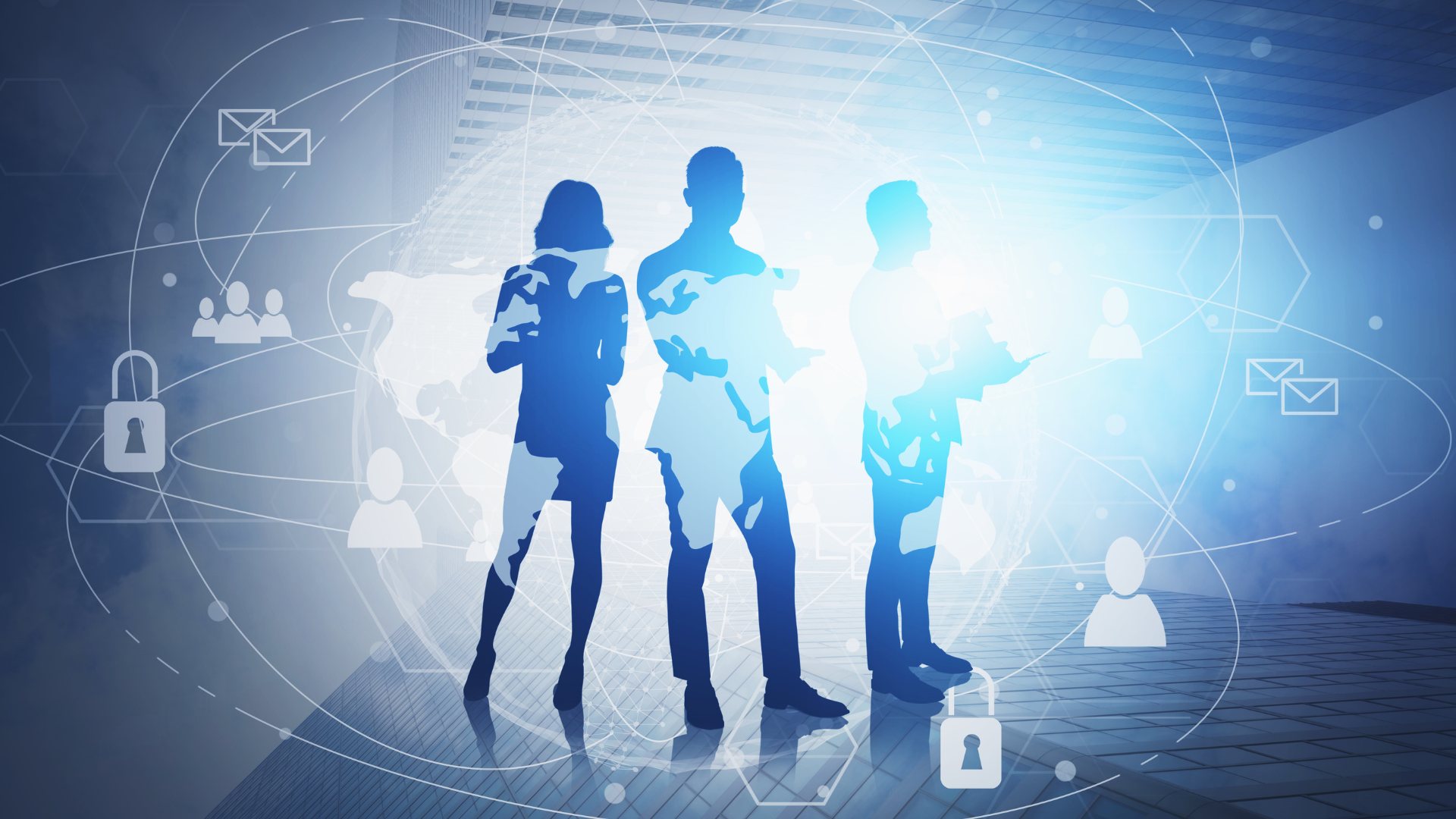Tag: HR strategies
-

What’s New in HR Automation and How It Benefits You Immediately
What’s New in HR Automation—and How It Benefits You ImmediatelyHR automation has evolved more in the past three years than in the previous three decades. What was once a department driven by paperwork, spreadsheets, and endless manual workflows is now becoming fully intelligent, predictive, and deeply connected to business growth. Today’s HR automation isn’t just about speed—it’s about accuracy, strategy, and giving HR leaders the ability to make smarter decisions faster. With platforms like NINJA HR leading the shift, organizations of all sizes are discovering immediate, measurable benefits from new HR technologies. In this 3000-word deep dive, we explore what’s changed, what’s new, and why it matters for every HR team aiming to work smarter—not harder.The New Era of HR AutomationHR automation used to be simple: converting manual tasks into digital checklists. Today, it’s a powerhouse of interconnected systems that use artificial intelligence, machine learning, and behavioral analytics to eliminate repetitive work and guide strategic HR decisions. Modern automation goes beyond task completion and becomes a partner in HR operations. It understands employee behavior, predicts trends, assists with compliance, improves accuracy, and connects every corner of the HR lifecycle. HR automation today is built on three pillars: intelligence, integration, and insight.AI-Powered Decision SupportOne of the biggest advancements in HR automation is AI-driven decision support. Instead of relying on manual analysis or fragmented data, modern HRMS platforms use AI to interpret employee patterns, identify early warning signals, and predict potential outcomes. NINJA HR’s AI engine, for example, analyzes attendance, engagement, and performance data to guide better decisions. It helps HR leaders spot risks like disengagement or turnover before they escalate, allowing proactive intervention.Automated Recruitment IntelligenceRecruitment automation has become smarter, faster, and more accurate. Resume scanning is no longer just keyword-based—instead, AI evaluates skill relevance, experience alignment, and cultural fit. NINJA HR’s recruitment automation ranks candidates, predicts their performance potential, and accelerates screening processes. Automated interview scheduling, chatbot-assisted candidate communication, and instant shortlisting reduce hiring time dramatically.Advanced Employee Self-Service ToolsToday’s employees expect seamless digital experiences. Modern HR automation includes advanced self-service portals powered by AI. Whether it’s applying for leave, checking PTO balances, updating documents, requesting letters, or viewing payslips, everything is instant and automated. NINJA HR offers responsive self-service dashboards that reduce workload for HR teams while boosting employee satisfaction. It helps employees manage their workflow efficiently without relying on HR intervention for routine queries.Next-Level Attendance and Time TrackingForget punch cards and manual attendance logs. HR automation now integrates biometric devices, GPS tracking for field teams, geofencing, facial recognition, and automated compliance alerts. NINJA HR syncs attendance in real time and ensures accurate shift tracking, overtime calculation, and leave synchronization. This eliminates payroll discrepancies and reduces time theft.Automated Learning and Development ProgramsTraining has become personalized thanks to AI. Modern HR automation analyzes employee skills, performance data, and future role requirements to create tailored learning paths. NINJA HR recommends courses, tracks completion, and provides learning analytics so companies can measure training impact. Automated reminders, mobile-friendly learning modules, and seamless LMS integration keep development ongoing and structured.Smarter Payroll and Compliance AutomationPayroll mistakes are one of the biggest pain points in HR. New HR automation tools calculate salary adjustments, track attendance, apply tax updates, manage reimbursements, and generate payslips automatically. NINJA HR uses compliance automation to stay updated on regional labor laws and policies to reduce manual errors. Built-in validation checks ensure every payroll cycle runs smoothly and accurately.Real-Time Analytics for Better HR LeadershipModern HR automation delivers real-time dashboards that present data in digestible visual formats. Whether it’s workforce analytics, performance trends, turnover patterns, or engagement insights, HR leaders get instant visibility. NINJA HR offers customizable dashboards that allow leaders to filter metrics by team, department, location, or role. With predictive analytics, HR can plan proactively rather than reactively.Workflow Automation That Reduces ChaosAutomation is no longer about isolated tasks—it’s about end-to-end workflows. NINJA HR automates processes like onboarding, offboarding, policy updates, asset allocation, probation evaluation, and leave approvals. Workflows trigger automatically based on specific actions or events. This eliminates missed steps, reduces HR workload, and ensures consistent employee experience.Modern Onboarding and Offboarding AutomationOnboarding is one of the most critical HR responsibilities. Modern automation offers digital forms, automated document collection, onboarding checklists, e-signatures, and scheduled training sessions. NINJA HR ensures every new hire is guided through a seamless onboarding journey. Similarly, offboarding automation prevents compliance gaps, ensures proper documentation, and protects organizational data.Chatbots and Virtual HR AssistantsAI chatbots allow employees to get instant answers to HR questions like policies, PTO, payroll status, and more. NINJA HR’s AI chat assistant reduces HR’s workload by answering repetitive questions 24/7. It improves accessibility, reduces resolution time, and enhances employee engagement.Immediate Benefits of Modern HR AutomationThe best part about today’s HR automation? The benefits begin immediately. Unlike older systems that required long learning curves, NINJA HR offers user-friendly interfaces and intuitive controls designed for HR teams of all sizes. Organizations see fast improvements in accuracy, time savings, engagement, and decision quality.Instant Time SavingsHR teams reclaim hours each week by eliminating repetitive tasks. Automated workflows streamline approvals, minimize follow-ups, and ensure tasks are completed without manual effort. Recruiters no longer sift through hundreds of resumes, managers don’t chase timesheets, and payroll teams avoid hours of reconciliation work.Cost Reductions from Day OneAutomation reduces hiring costs, payroll errors, compliance penalties, and administrative overhead. By centralizing HR processes, organizations reduce dependency on multiple software tools and subscriptions. Predictive turnover analytics minimize replacement costs by identifying at-risk employees early.Better HR Accuracy and ComplianceMistakes are expensive—and HR automation eliminates most of them. Automated attendance tracking, payroll calculations, and compliance alerts ensure HR stays accurate and audit-ready. Real-time validation checks help avoid errors that could result in penalties or disputes.Improved Employee ExperienceModern HR automation gives employees control over their experience. Easy access to documents, clear visibility into their data, and instant responses through chatbots create a more empowered workforce. Engaged employees are more productive, loyal, and aligned with company goals.Increased HR ProductivityWith repetitive tasks automated, HR professionals finally have time for what truly matters: culture building, engagement strategies, talent development, and leadership. Automation shifts HR from administrative work to strategic influence.Smarter Decision-MakingData becomes a superpower for HR teams using NINJA HR. Real-time analytics reveal issues early, predict future challenges, and offer actionable insights. Leaders make faster, more accurate, and more strategic decisions—backed by data, not guesswork.Future-Proofing HRModern HR automation evolves continuously. AI learns as the organization grows, making recommendations more accurate over time. With hybrid work models on the rise, automation ensures HR operations remain seamless, scalable, and adaptive.ConclusionHR automation has entered a revolutionary stage where intelligence, predictive analytics, and seamless workflows redefine how HR teams operate. What’s new in HR automation today is not just better technology—it’s a fundamentally better way of working. Platforms like NINJA HR empower HR leaders to automate tasks, improve compliance, elevate employee experience, and drive strategic growth. And the best part? The benefits start immediately. From faster processes to better decision-making, HR automation is no longer a future luxury—it is a present necessity that transforms HR from a reactive function into a proactive, data-driven powerhouse. -

Wish You Had a Clone? We Handle the Admin So You Can Lead
Wish You Had a Clone? We Handle the Admin So You Can LeadEvery HR professional has been there: swamped by a pile of resumes, calendar invites for back-to-back interviews, last-minute onboarding updates, compliance deadlines, payroll cycles, and a constant stream of Slack messages or emails. You think to yourself, “If only I had a clone.” But what if you didn’t need a clone—just a smarter system? Welcome to the new age of HR, where technology like NINJA HR handles your admin, so you can focus on what really matters: leading your people.The Leadership BottleneckThe paradox of modern HR leadership is this: while strategic vision, culture building, and employee development are the most valuable activities HR leaders bring to the table, they often spend 60–70% of their time on administrative tasks. Manual data entry, scheduling interviews, chasing signatures, processing payroll—all necessary but time-consuming. The more time you spend in the weeds, the less time you have to lead. And this doesn’t just cost time—it costs growth, engagement, and innovation. Great cultures don’t build themselves, and employee retention isn’t an accident. It takes intentional leadership, and leadership takes time.The Hidden Costs of Admin OverloadAdmin overload isn’t just inconvenient—it’s expensive. It contributes to:
Burnout: HR leaders juggling strategy and admin often feel stretched thin, leading to faster burnout.
Slower Decisions: When your energy is spent on tasks, you’re slower to respond to cultural or performance issues.
Missed Opportunities: Important people initiatives get sidelined in favor of urgent busywork.
Inefficiency: Repeating manual tasks that could be automated costs thousands of hours per year.
It’s a silent drain on productivity. But with the right tools, this changes fast.What If You Could Automate the Admin?That’s where NINJA HR comes in. It’s not a clone—it’s better. It’s a cloud-based HR platform that’s designed to take the heavy lifting off your plate. You stay in control, but the system handles the repeatable tasks with speed and precision. Here’s how it redefines your workday:Smart Automation for Everyday TasksFrom onboarding workflows to payroll runs, NINJA HR automates recurring processes. It sends reminders, triggers task lists, and ensures no step is skipped. New hires get a seamless experience. Admins and managers get time back. You get to breathe—and lead.One Dashboard to Rule Them AllNo more juggling spreadsheets, email chains, and multiple tabs. NINJA HR’s central dashboard shows you pending tasks, analytics, and alerts in one glance. It’s your daily command center—simple, smart, and intuitive.Performance Management, SimplifiedTired of chasing managers for reviews? NINJA HR sets automated cycles, reminders, and templates for performance reviews. Employees and managers are guided through the process with clarity, freeing HR to coach—not nag.Time-Off Requests Without the HassleEmployees submit requests, managers approve, calendars sync—all without a single email chain. And it’s all logged automatically for payroll accuracy.Compliance? Covered.Audits, document retention, local labor laws—NINJA HR’s compliance features keep your records in check. Get automated alerts for contract expirations, visa renewals, and training certifications. Sleep better at night.The Leadership You Could Be DoingOnce the admin burden is gone, what’s possible?
Culture Strategy: Launch DEI programs, improve recognition, strengthen values.
Talent Development: Build upskilling pathways and track learning plans.
Employee Listening: Use pulse surveys to understand how teams are feeling in real time.
Data-Driven Strategy: Review trends in attrition, engagement, and productivity—and act with confidence.
These are the things that move the needle. And NINJA HR helps you finally do them.It’s Not About Doing More—It’s About Doing What MattersYou don’t need a clone. You need to delegate the right way. And when you give the busywork to a system that never forgets a deadline or loses a file, you’re finally free to step into the HR leadership you were hired for. NINJA HR is that system.ConclusionYou’re not meant to be buried in admin. You’re meant to lead culture, support your people, and shape the future of work in your company. NINJA HR gives you the breathing room to stop reacting and start leading. The future of HR leadership isn’t cloning yourself—it’s using smarter systems that give you back your time. Ready to stop doing everything and start doing what matters most? Let NINJA HR handle the admin, so you can lead with purpose. -

Every Click Counts: Measuring ROI in Recruitment with NINJA HR
Every Click Counts: Measuring ROI in Recruitment with NINJA HRRecruitment has always been a critical function for organizations. Attracting, hiring, and retaining top talent directly impacts a company’s growth and success. But as talent markets become more competitive and hiring costs rise, HR teams are under increasing pressure to demonstrate the return on investment (ROI) of their recruitment efforts. Traditional methods often fail to provide clear insights into where time and money are being spent—and whether those investments are paying off. Enter NINJA HR, a tech-driven solution designed to give HR professionals the tools they need to measure, optimize, and maximize recruitment ROI. Let’s explore why measuring recruitment ROI matters and how NINJA HR makes every click count.Why Measuring Recruitment ROI MattersRecruitment is often seen as a cost center rather than a value driver. Without clear metrics, HR leaders struggle to justify budget allocations or optimize their strategies. Measuring ROI helps answer crucial questions like:
Where are our best hires coming from?
How much does it cost to fill a role?
Are we getting quality candidates from paid channels?
What is the long-term value of our hiring decisions?
By tracking ROI, companies can refine their hiring strategies, allocate resources effectively, and build stronger, more engaged teams.The Challenges of Tracking Recruitment ROIFor many HR teams, measuring ROI is easier said than done. Challenges include:
Fragmented Data: Metrics are spread across job boards, applicant tracking systems, and spreadsheets.
Lack of Real-Time Insights: Static reports fail to capture trends as they happen.
No Standard Metrics: Without consistent benchmarks, it’s hard to compare channels or campaigns.
This is where NINJA HR shines, consolidating data and automating ROI tracking.How NINJA HR Measures Recruitment ROININJA HR provides a comprehensive set of tools to calculate and improve ROI across the recruitment funnel:1. Source TrackingWith NINJA HR, you can see which job boards, social channels, and referral programs deliver the highest quality candidates. Detailed analytics track each applicant’s journey, from the first click to onboarding, helping you invest in the sources that work.2. Cost-per-Hire AnalysisNINJA HR calculates your cost per hire by factoring in ad spend, recruiter hours, and other expenses. Real-time dashboards help you identify expensive bottlenecks and optimize workflows to reduce costs without sacrificing quality.3. Time-to-Fill MetricsDelays in hiring can lead to lost productivity and missed opportunities. NINJA HR tracks time-to-fill for every position, pinpointing areas where processes can be streamlined to accelerate hiring.4. Quality of Hire TrackingBeyond cost and speed, quality matters. NINJA HR monitors performance indicators for new hires, tying them back to recruitment sources so you know which channels bring in the highest-performing employees.5. Predictive Analytics for Future PlanningNINJA HR’s predictive tools analyze historical data to forecast hiring needs and budget requirements. This empowers HR leaders to proactively plan for growth and avoid reactive hiring sprees that drain resources.The Benefits of Tech-Driven ROI MeasurementBy leveraging NINJA HR’s analytics, companies can:
Reduce Wasted Spend: Focus only on high-performing channels.
Improve Candidate Experience: Streamline application processes for faster responses.
Make Data-Driven Decisions: Use insights to guide strategy, not guesswork.
Showcase HR Impact: Provide leadership with clear, quantifiable results.ConclusionIn recruitment, every click, every ad placement, and every interview represents an investment. Without the ability to measure outcomes, HR teams are flying blind. NINJA HR ensures every effort counts by equipping organizations with the tools to track, analyze, and optimize recruitment ROI. The result? Smarter hiring decisions, better candidates, and a stronger bottom line. It’s time to replace guesswork with precision—because in recruitment, every click truly does count. -

5 Outdated HR Practices You Should Retire Today
5 Outdated HR Practices You Should Retire TodayThe workplace has undergone a massive transformation over the past decade. Hybrid teams, digital onboarding, AI-powered hiring tools, and flexible work models have redefined how we attract, manage, and retain talent. Yet, many HR departments are still clinging to outdated practices that no longer serve today’s fast-moving and employee-centric work environment. Below are five legacy HR practices that deserve a graceful retirement—and how modern tools like NINJA HR can replace them with smarter, more human-centric alternatives.1. Annual Performance ReviewsThe once-a-year performance review is outdated, often biased, and universally dreaded. Waiting 12 months to give feedback is not only inefficient—it disengages employees and limits their potential. Progressive organizations are adopting continuous feedback models using real-time performance tracking tools. NINJA HR enables managers to set quarterly OKRs, deliver micro-feedback regularly, and automatically generate performance snapshots using real-time data. This ensures transparency, growth, and a more agile development path for every employee.2. Manual Paper-Based OnboardingFiling cabinets, physical forms, and multi-day onboarding processes are relics of the past. Not only do they delay productivity, but they also create a poor first impression. Today’s digital onboarding systems automate document collection, training schedules, benefits enrollment, and culture orientation—all from a centralized dashboard. NINJA HR’s onboarding workflow welcomes new hires with automated checklists, e-signatures, virtual training modules, and welcome messages from team leads—resulting in smoother transitions and higher retention rates.3. One-Size-Fits-All Benefits PackagesOffering a single, inflexible benefits plan doesn’t meet the needs of today’s diverse, multi-generational workforce. Employees now expect personalized options for healthcare, wellness programs, remote work stipends, and professional development. Platforms like NINJA HR allow HR teams to customize benefits by role, location, or personal preference—empowering employees to choose what matters most to them, leading to increased satisfaction and loyalty.4. Relying on Gut Instincts in HiringHiring based on intuition and a resume alone leads to bias, inefficiency, and poor culture fits. Advanced recruitment software like NINJA HR now leverages AI for screening, predictive analytics, and behavioral assessments. These tools match candidates with job roles and teams more accurately, reduce unconscious bias, and ensure the best fit based on data-driven insights. The result? Faster, fairer hiring decisions and stronger long-term retention.5. Ignoring Employee SentimentOld-school HR waited for exit interviews to understand employee dissatisfaction—too late to prevent turnover. Modern HR relies on ongoing sentiment analysis and anonymous surveys. With tools embedded in NINJA HR, managers receive real-time morale scores, team sentiment trends, and automated alerts on potential flight risks. Acting early fosters trust, improves engagement, and reduces attrition significantly.ConclusionRetiring outdated HR practices isn’t just about efficiency—it’s about staying competitive in a workplace where talent expectations have evolved. With smart platforms like NINJA HR, companies can modernize their HR approach to be more agile, empathetic, and data-driven. It’s time to ditch the dusty playbook and embrace an era of people-first, tech-enabled HR leadership. -

Boosting Employee Engagement with Smart HR Technology
Boosting Employee Engagement with Smart HR TechnologyIn the evolving landscape of modern work, employee engagement is more than just a buzzword—it is a critical driver of productivity, innovation, and retention. Organizations with high engagement levels consistently outperform those without it. As traditional methods of employee engagement become outdated and ineffective, smart HR technology emerges as a powerful enabler of a more connected, motivated, and productive workforce. This article explores how leveraging technology can transform employee engagement from a reactive practice into a strategic advantage.Understanding Employee EngagementEmployee engagement refers to the emotional commitment an employee has toward their organization and its goals. Engaged employees are enthusiastic about their work, contribute proactively, and align with the company’s mission. Unfortunately, studies indicate that a significant percentage of employees worldwide remain disengaged, citing poor communication, lack of recognition, limited growth opportunities, and weak leadership as contributing factors.Smart HR technology addresses these gaps by providing tools and platforms that make it easier for HR leaders to listen to, connect with, and empower their people.Personalized Communication ChannelsEffective communication is foundational to engagement. Smart HR platforms like NINJA HR offer multi-channel communication systems that personalize how employees receive updates, feedback, and recognition. Whether it’s instant messaging, email digests, or in-app alerts, employees stay informed and connected in ways that feel relevant and timely.Real-Time Feedback and SurveysGone are the days of annual performance reviews being the sole method of feedback. Smart HR systems enable continuous feedback loops through real-time comments, regular one-on-ones, and pulse surveys. Managers can quickly gauge team morale and act on issues before they escalate. Employees, in turn, feel heard and valued.Recognition and Rewards AutomationRecognition plays a pivotal role in employee engagement. Smart HR software provides features that allow peers and managers to recognize achievements with just a few clicks. Some platforms even integrate with points-based reward systems, giving employees the ability to redeem rewards that matter to them. Automated celebrations of work anniversaries, milestones, and team accomplishments further embed a culture of appreciation.Career Pathing and Learning OpportunitiesEmployees crave growth and development. Smart HR platforms help HR leaders map career paths and recommend personalized learning modules. AI-driven insights match employees with mentorships, stretch assignments, and certifications that align with their career aspirations. When employees see a future within the company, they engage more deeply.Flexible Work and Wellbeing InitiativesSmart HR technology supports hybrid and remote work models by enabling clear policies, time tracking, and virtual collaboration. Beyond that, it integrates wellness programs, including mental health resources, fitness challenges, and stress management content. Employees who feel supported holistically are more likely to stay committed and motivated.Data-Driven Engagement StrategiesOne of the greatest advantages of smart HR tech is the access to engagement analytics. HR teams can identify patterns, such as declining engagement in specific departments, and intervene with tailored solutions. These insights turn engagement from guesswork into a measurable, strategic priority.ConclusionEmployee engagement has evolved from a static metric to a dynamic, data-informed strategy. Smart HR technology not only enhances how companies connect with their people but also empowers employees to take ownership of their experience. With platforms like NINJA HR, businesses are no longer relying on outdated tools but instead embracing modern solutions that turn engagement into a core driver of performance, loyalty, and growth. -

The Top 5 AI Innovations Transforming HR This Year
The Top 5 AI Innovations Transforming HR This YearIn 2025, artificial intelligence is revolutionizing human resources, enhancing efficiency, personalization, and strategic decision-making. Here are the top five AI innovations transforming HR this year:Agentic AI: Autonomous HR AssistantsAgentic AI refers to intelligent agents capable of performing complex HR tasks with minimal human intervention. These AI agents can autonomously handle functions such as onboarding, payroll processing, and policy enforcement, allowing HR professionals to focus on strategic initiatives. For instance, Workday’s Illuminate AI Agents streamline various HR processes, enhancing efficiency and reducing overhead costs.AI-Powered Recruitment and Resume ScreeningAI is transforming recruitment by automating resume screening and candidate evaluation. Advanced systems utilize large language models (LLMs) to assess resumes contextually, reducing bias and improving hiring efficiency. A multi-agent framework employing LLMs has demonstrated effectiveness in automating resume screening, enabling more efficient and scalable hiring workflows.Personalized Learning and Development (L&D) ProgramsAI-driven platforms are customizing employee training by analyzing individual learning styles and career goals. This personalization enhances skill development and aligns with organizational objectives. Companies are leveraging AI to deliver tailored learning experiences, fostering continuous employee growth and engagement.AI-Enhanced Employee OnboardingAI is streamlining the onboarding process by automating administrative tasks and providing new hires with instant access to information. Organizations like Hitachi have implemented AI digital assistants to handle paperwork and address new-hire queries, significantly reducing onboarding time and enhancing the employee experience.AI-Driven Performance ManagementAI tools are revolutionizing performance management by providing real-time feedback and predictive analytics. These systems analyze employee data to identify performance trends, enabling proactive interventions and personalized development plans. Such AI-driven insights support a more dynamic and responsive approach to employee performance.These AI innovations are not only enhancing HR operations but also contributing to more personalized and efficient employee experiences. By embracing these technologies, organizations can stay competitive and foster a more agile and responsive workforce. -

Why Your HR Team Needs to Become Data-Driven in 2025
Why Your HR Team Needs to Become Data-Driven in 2025
In the rapidly evolving landscape of 2025, Human Resources (HR) is no longer just about managing paperwork and processing payroll. To remain competitive and effective, HR teams must embrace a data-driven approach. This article explores the critical reasons why your HR team needs to become data-driven in 2025, and how this transformation can drive organizational success.
The Evolving Role of HR
The traditional role of HR is shifting from administrative tasks to strategic decision-making. In 2025, HR professionals are expected to be strategic partners, providing insights that influence business outcomes. This shift necessitates a data-driven approach to HR.
- Strategic Partnership: HR teams are expected to align talent strategies with business goals.
- Talent Analytics: Data-driven insights are crucial for attracting, retaining, and developing top talent.
- Employee Experience: Data helps personalize and improve the employee experience.
1. Enhancing Talent Acquisition
Data-driven HR can revolutionize talent acquisition by identifying the most effective sourcing channels, predicting candidate success, and optimizing the hiring process.
- Sourcing Effectiveness: Analyze data to identify the most productive recruitment channels.
- Predictive Hiring: Use AI and machine learning to predict candidate performance and fit.
- Time-to-Hire Optimization: Streamline the hiring process based on data insights.
2. Improving Employee Retention
Data can help HR teams identify factors that influence employee retention and develop strategies to reduce turnover.
- Turnover Analysis: Identify patterns and reasons for employee turnover.
- Employee Engagement: Use data to measure and improve employee engagement.
- Predictive Retention: Identify employees at risk of leaving and implement proactive retention strategies.
3. Optimizing Employee Development
Data-driven HR can personalize employee development plans and identify skill gaps, ensuring that employees have the necessary skills for current and future roles.
- Skill Gap Analysis: Identify areas where employees need additional training.
- Personalized Learning: Use data to create customized learning paths.
- Performance Improvement: Use data to identify areas for performance improvement and provide targeted feedback.
4. Enhancing Employee Experience
Data can provide insights into employee satisfaction and preferences, allowing HR teams to create a positive and engaging work environment.
- Feedback Analysis: Analyze employee feedback to identify areas for improvement.
- Personalized Benefits: Use data to tailor benefits and perks to employee preferences.
- Work-Life Balance: Use data to understand and address employee work-life balance concerns.
5. Ensuring Compliance and Reducing Risk
Data-driven HR can help organizations ensure compliance with labor laws and regulations, reducing the risk of legal issues.
- Compliance Monitoring: Use data to monitor compliance with regulations.
- Risk Assessment: Identify and mitigate potential HR-related risks.
- Audit Readiness: Maintain accurate and accessible HR records for audits.
6. Driving Organizational Performance
By aligning talent strategies with business goals, data-driven HR can contribute to improved organizational performance and profitability.
- Performance Metrics: Track and analyze HR metrics to measure the impact of HR initiatives.
- Workforce Planning: Use data to forecast future workforce needs and develop talent strategies.
- ROI Analysis: Measure the return on investment for HR programs and initiatives.
Conclusion: In 2025, becoming a data-driven HR team is no longer optional, but essential for organizational success. By leveraging data to enhance talent acquisition, improve retention, optimize development, enhance employee experience, ensure compliance, and drive performance, HR teams can become strategic partners that contribute to the overall success of the organization.
-

How AI Personalizes Employee Experiences Like Never Before
How AI Personalizes Employee Experiences Like Never BeforeIn today’s fast-paced work environment, the intersection of artificial intelligence (AI) and human resources (HR) has ushered in a new era of employee experience personalization. Organizations worldwide are increasingly leveraging AI-driven solutions to tailor everything from recruitment to career development and day-to-day engagement. This transformation is not just about automating routine tasks but about creating highly personalized experiences that empower employees, boost productivity, and foster a more inclusive workplace culture. In this article, we explore how AI is revolutionizing employee experiences, delve into its many facets, discuss its benefits and challenges, and look at what the future holds for a truly personalized workforce.IntroductionFor decades, HR departments have struggled with the challenge of addressing the diverse needs and expectations of employees. Traditional one-size-fits-all approaches have increasingly proven inadequate in a world where workforces are more diverse and expectations are higher than ever. Enter artificial intelligence—a powerful tool that offers the capability to analyze vast amounts of data and deliver personalized insights. AI technologies are transforming how organizations interact with their employees by providing customized solutions that drive engagement, improve performance, and create a supportive work environment tailored to individual strengths and preferences.The concept of personalization in the workplace is not new; however, its scale and scope have expanded dramatically due to advances in AI, machine learning, and data analytics. From recruitment to performance reviews and ongoing employee engagement, AI-powered tools are enabling HR professionals to design experiences that adapt to the evolving needs of employees. In doing so, organizations are witnessing higher employee satisfaction, increased retention rates, and improved overall business performance.The Evolution of Employee ExperienceHistorically, the employee experience was defined by basic elements such as salary, benefits, and job security. Over time, however, employees have sought more meaningful work environments that promote personal and professional growth. In response, organizations have shifted their focus to building cultures that value creativity, flexibility, and work-life balance. The evolution of the employee experience now includes aspects such as personalized career paths, customized training programs, and targeted wellness initiatives.Today, AI is at the forefront of this transformation. By analyzing data from employee surveys, performance metrics, and even social interactions on company platforms, AI systems can identify trends and provide recommendations that were once unimaginable. These insights allow HR teams to create dynamic, personalized experiences that align with each employee’s unique goals, skills, and preferences. As organizations strive to create environments where employees can thrive, AI offers an unprecedented opportunity to redefine the employee experience on a granular level.How AI Personalizes the Employee ExperienceAI personalizes employee experiences by leveraging large datasets to generate insights that inform every aspect of HR management. Some key areas include:1. Recruitment and Onboarding: AI tools can analyze resumes, social media profiles, and online assessments to predict candidate fit, reducing bias and ensuring a more diverse talent pool. During onboarding, chatbots and virtual assistants guide new hires through orientation processes, answering questions and providing personalized training schedules.2. Personalized Learning and Development: AI systems assess employee skills and learning styles to recommend tailored training programs. These systems monitor progress and adjust learning paths based on individual performance, ensuring that employees receive the most relevant and impactful training.3. Performance Management: Traditional performance reviews are often static and subjective. AI-powered platforms provide continuous feedback and objective performance data, enabling managers to create personalized development plans and address performance issues in real time.4. Employee Engagement: By analyzing communication patterns and employee sentiments through natural language processing (NLP), AI systems can gauge morale and identify areas needing improvement. These insights help organizations design targeted engagement initiatives and foster a supportive work culture.These applications are just the beginning. AI is also being used to tailor benefits packages, optimize work schedules, and even predict employee turnover, enabling proactive interventions before issues escalate.Real-World Applications of AI in HROrganizations across various industries have successfully integrated AI into their HR practices. For instance, multinational corporations are using AI-driven applicant tracking systems (ATS) to screen candidates efficiently and without bias. These systems analyze thousands of resumes in seconds, identifying the best-fit candidates based on predefined criteria and even predicting their long-term success within the company.In another example, companies have deployed AI-powered chatbots to handle routine HR inquiries—from payroll questions to benefits enrollment—freeing up HR professionals to focus on strategic tasks. These chatbots use machine learning algorithms to improve their responses over time, ensuring that employees receive accurate and personalized information quickly.Furthermore, AI is transforming the employee engagement landscape. Some firms utilize sentiment analysis tools that scan internal communications and employee feedback to gauge workplace morale. These tools can identify patterns of dissatisfaction or stress and alert management to potential issues, allowing for timely interventions that improve overall employee well-being.Case studies reveal that companies investing in AI-driven HR tools report higher employee satisfaction, reduced turnover, and significant cost savings in recruitment and training. The ability to continuously monitor and adapt to employee needs represents a paradigm shift in how organizations manage their most valuable asset—their people.AI in Recruitment and OnboardingOne of the most significant ways AI is changing the game in HR is through revolutionizing the recruitment and onboarding processes. AI-powered recruitment platforms sift through large volumes of candidate data, evaluating factors such as skills, experience, cultural fit, and even potential for future growth. This not only accelerates the hiring process but also improves the quality of new hires.During onboarding, AI-driven virtual assistants provide personalized orientation experiences for new hires. They can guide employees through the company’s policies, help set up necessary accounts, and even tailor training modules to the individual’s role. This level of personalization ensures that new employees feel welcomed, valued, and well-prepared from day one, setting the stage for long-term success.For example, one global company implemented an AI onboarding system that reduced the time to productivity by 30% while increasing new hire satisfaction scores. By automating repetitive tasks and providing customized information, the system allowed HR professionals to concentrate on more strategic initiatives, further enhancing overall organizational performance.Personalized Learning and DevelopmentAnother area where AI is making significant strides is in personalized learning and development. Traditional training programs often adopt a uniform approach, which may not address the unique learning styles and developmental needs of each employee. AI transforms this by analyzing an individual’s performance, career aspirations, and learning preferences to recommend tailored development programs.These personalized training pathways are dynamic, meaning they evolve as employees progress in their careers. For instance, AI can identify skill gaps by analyzing performance metrics and then suggest relevant courses, workshops, or mentorship opportunities. This ensures that employees are not only well-prepared for their current roles but are also equipped with the skills needed for future challenges and opportunities.Several organizations have reported that implementing AI-driven learning platforms leads to higher engagement in training programs, faster skill acquisition, and better overall performance. By aligning training initiatives with individual needs, companies can foster a culture of continuous learning and improvement, which is essential in today’s rapidly changing business landscape.AI-Driven Performance Management and FeedbackPerformance management has traditionally relied on annual reviews, which can be subjective and fail to provide actionable insights. AI is revolutionizing performance management by offering continuous feedback and data-driven insights. By collecting and analyzing performance data in real time, AI systems provide managers with a comprehensive view of an employee’s contributions and areas for improvement.For instance, AI-powered platforms can analyze metrics such as project completion rates, collaboration levels, and even peer feedback to create a detailed performance profile. This allows managers to have informed discussions with employees, set realistic and personalized goals, and implement targeted development plans. Moreover, employees benefit from immediate feedback that helps them adjust their performance and achieve their objectives more effectively.Research shows that organizations using continuous performance management systems experience a 50% increase in employee engagement and a significant reduction in turnover. This data-driven approach not only makes performance reviews more objective but also helps create a culture where employees feel valued and supported in their professional growth.Enhancing Employee Engagement Through PersonalizationEmployee engagement is critical for organizational success. Engaged employees are more productive, innovative, and committed to their organizations. AI is increasingly being used to drive engagement by personalizing various aspects of the work experience. From customizing communication styles to offering tailored wellness programs, AI ensures that each employee’s unique needs and preferences are met.One innovative application is the use of sentiment analysis, where AI algorithms assess the tone and content of employee communications—emails, internal chat messages, and survey responses—to gauge overall morale. This analysis helps HR departments identify emerging issues and intervene before problems escalate. Furthermore, AI can recommend targeted engagement strategies such as team-building exercises, personalized rewards, or changes in management practices based on individual feedback.For example, a multinational firm deployed an AI-based engagement tool that tracked employee sentiment in real time. The insights led to the creation of personalized engagement initiatives that improved overall satisfaction scores by 25% within the first year. By understanding what drives each employee, organizations can create environments that foster trust, collaboration, and long-term loyalty.AI in Workforce Planning and Talent ManagementWorkforce planning is a strategic function that benefits greatly from AI. Traditional methods of predicting workforce needs often fall short in the face of rapidly changing market dynamics and evolving skill requirements. AI, however, can analyze historical data, market trends, and internal performance metrics to predict future workforce needs with greater accuracy.This enables organizations to proactively identify skill gaps, plan for succession, and allocate resources to areas with the greatest potential for growth. Furthermore, AI-driven talent management platforms can personalize career development paths for employees, suggesting not only immediate training but also long-term career trajectories that align with both individual aspirations and organizational goals.For instance, by leveraging AI insights, a leading tech company was able to reduce turnover by 20% and boost internal promotions by 30% through personalized career planning and targeted talent development programs. This strategic approach to workforce planning not only maximizes the potential of current employees but also helps attract top talent by demonstrating a commitment to individual growth and development.Ethical Considerations and ChallengesWhile AI offers numerous benefits in personalizing employee experiences, it also raises important ethical considerations and challenges. Data privacy is a primary concern; as AI systems collect and analyze vast amounts of personal information, organizations must ensure that this data is handled securely and in compliance with privacy regulations. Employees must have confidence that their data is used responsibly and that their privacy is respected.Another challenge is the potential for algorithmic bias. If AI systems are trained on historical data that contains biases, they may inadvertently perpetuate those biases in recruitment, performance evaluations, and career development recommendations. To mitigate this risk, organizations must continuously audit and update their AI models, ensuring that they are fair, transparent, and accountable.Additionally, the use of AI in HR can sometimes lead to over-reliance on quantitative data, potentially overlooking the qualitative aspects of employee experiences. While metrics and analytics provide valuable insights, they cannot fully capture the nuances of human behavior and organizational culture. Striking the right balance between data-driven decision-making and human intuition is critical to maintaining a supportive and empathetic work environment.Future Trends and Innovations in AI for Employee ExperienceThe landscape of AI in HR is evolving rapidly. Future trends point toward even greater personalization, where AI not only responds to employee needs but anticipates them. Emerging technologies such as advanced natural language processing, emotion recognition, and predictive analytics will further refine how organizations interact with their workforce.One promising area is the development of AI-driven platforms that integrate multiple data sources—combining insights from performance metrics, social interactions, and personal preferences—to deliver a truly holistic view of employee well-being. Such platforms will enable HR teams to craft highly customized work experiences, ranging from personalized benefits packages and wellness programs to tailored work schedules and remote work options.Another innovation on the horizon is the use of virtual and augmented reality (VR/AR) in training and development. These immersive technologies, powered by AI, could revolutionize how employees learn and collaborate by creating realistic simulations and interactive learning environments that adapt to individual learning styles.Moreover, the integration of blockchain technology could enhance transparency and security in data handling, ensuring that employee information is securely managed and shared only with authorized parties. This would address some of the privacy concerns associated with AI while building greater trust among employees.As AI technology continues to advance, organizations that embrace these innovations will likely see a significant competitive advantage, as they create more agile, responsive, and engaging workplaces. The future of work is set to be defined by how effectively companies can leverage AI to create personalized employee experiences that drive satisfaction, innovation, and productivity.ConclusionAI is transforming the employee experience like never before by personalizing every aspect of the work environment. From recruitment and onboarding to performance management, learning and development, and ongoing engagement, AI-powered tools enable organizations to tailor experiences that meet the unique needs of every employee. These personalized approaches lead to higher employee satisfaction, improved performance, and increased retention, ultimately contributing to the overall success of the organization.While there are challenges related to data privacy, algorithmic bias, and the balance between quantitative data and human insight, the potential benefits far outweigh the risks. As technology continues to evolve, we can expect AI to play an increasingly pivotal role in shaping the future of work. Organizations that invest in AI-driven personalization today will be better positioned to adapt to the dynamic demands of tomorrow’s workforce, ensuring that every employee feels valued, supported, and empowered to achieve their full potential.The journey toward a fully personalized employee experience is ongoing, and AI is a key enabler in this transformation. By harnessing the power of data and advanced analytics, companies can create environments that not only meet the current needs of their employees but also anticipate and adapt to future challenges. This proactive approach to employee experience is essential in today’s competitive landscape, where the well-being and engagement of the workforce are critical to long-term success.In summary, AI is not merely an operational tool—it is a catalyst for profound cultural change. Its ability to personalize the employee experience offers a glimpse into a future where work is not just a place to earn a living, but a space that nurtures growth, creativity, and human connection. As organizations continue to explore and implement AI-driven solutions, the employee experience will be redefined, paving the way for a more engaged, dynamic, and resilient workforce.The impact of AI on the workplace is already evident, and its potential for further transformation is immense. Companies that embrace AI to tailor experiences at every touchpoint—from hiring to daily engagement—will set new standards for excellence in human resources. By creating personalized, supportive, and adaptive work environments, AI is poised to change the game in employee experience, ensuring that each individual’s journey at work is as unique and rewarding as their contributions to the organization.Ultimately, the power of AI lies in its ability to transform raw data into meaningful insights that drive real change. In the realm of HR, this means moving beyond generic strategies and developing a nuanced understanding of what each employee needs to succeed. The result is a future where work is not a one-size-fits-all proposition but a personalized experience that respects and nurtures the individual. As we look ahead, the integration of AI into employee experience strategies will continue to evolve, offering new opportunities for innovation and growth. Organizations that invest in these technologies today will be the pioneers of a more personalized, efficient, and human-centered approach to work.SEO Keywords: AI personalization, employee experience, HR tech, artificial intelligence in HR, personalized employee benefits, AI-driven employee engagement, AI in workplace, employee experience optimization, smart HR, employee satisfaction, AI-powered HR, workforce personalization, employee performance personalization, AI employee insights, HR innovation, AI talent management, personalized career development, employee retention AI, machine learning HR, digital employee experience, workplace automation, future of work, AI recruitment, employee well-being, employee feedback AI. -

The AI Tools that Keeps Your Team Motivated and Productive
The Rise of Emotional AI: Can Machines Really Understand Feelings?
Emotional AI (affective computing) is revolutionizing human-machine interaction by enabling technology to detect, interpret, and respond to human emotions. From mental health chatbots to sentiment-tracking customer service tools, machines are now claiming to understand our feelings. But can silicon truly comprehend the complexity of human emotion, or are we witnessing sophisticated pattern recognition masquerading as empathy?
How Emotional AI Works
Modern emotion recognition systems combine multiple technologies:
- Facial coding analysis: Maps micro-expressions using computer vision (e.g., Affectiva’s technology detects 7 core emotions)
- Vocal biomarkers: Analyzes pitch, tone and speech patterns (Beyond Verbal extracts emotions from voice)
- Biometric sensors: Tracks physiological responses like heart rate variability and skin conductance
- Language processing: Interprets emotional context in text (IBM Tone Analyzer assesses 13 emotional tones)
Breakthrough Applications
1. Mental Health Support
Woebot and Wysa use CBT techniques while analyzing user emotional states through conversational patterns.
2. Education Technology
Emotion-aware tutors like Carnegie Learning’s platforms adapt teaching methods based on student frustration levels.
3. Automotive Safety
BMW’s emotional AI detects driver stress or fatigue, triggering safety interventions.
The Empathy Illusion
Critics argue emotional AI creates dangerous anthropomorphic fallacies:
- Cultural bias: Most systems train on Western facial expressions, misreading 35% of Asian emotions (MIT Media Lab findings)
- Context blindness: Can’t distinguish between tears of joy and grief without situational clues
- Simulated vs real understanding: As philosopher John Searle notes, “Syntax is not semantics” – recognizing patterns ≠ experiencing feelings
Ethical Minefields
1. Emotional Surveillance
China’s social credit system reportedly experiments with emotion recognition in surveillance cameras.
2. Manipulation Risks
Political campaigns could micro-target voters based on emotional vulnerabilities detected through AI.
3. Therapeutic Overreach
FDA warns against mental health apps making unsubstantiated diagnostic claims.
The Future of Emotional Machines
Next-generation developments include:
- Multimodal integration: Combining facial, vocal and physiological data for 90%+ accuracy (current systems average 65%)
- Neuromorphic chips: Hardware modeled after emotional processing in the human brain
- Artificial emotional intelligence: Systems that don’t just recognize but claim to experience emotions (Sophia robot’s controversial statements)
Conclusion
While emotional AI can increasingly mimic empathy through advanced pattern recognition, the hard problem of machine consciousness remains unresolved. As these systems permeate healthcare, education and workplace environments, we must maintain clear boundaries between useful emotional analytics and the anthropomorphic projection of human qualities onto machines. The most ethical path forward may be developing emotional AI that augments human connection rather than attempting to replace it.
-

Breaking Down AI Myths in Human Resources
Breaking Down AI Myths in Human Resources: Separating Fact from FictionArtificial Intelligence (AI) is transforming Human Resources (HR), yet misconceptions persist. Let’s debunk common myths to reveal how AI truly enhances HR practices.Myth 1: “AI Will Replace HR Jobs”Reality: AI augments HR roles, automating repetitive tasks like resume screening and payroll processing. For example, tools like BambooHR and Workday streamline administrative work, freeing HR professionals to focus on strategic initiatives like employee engagement and talent development.- Fact: A 2023 Gartner study found that 58% of HR teams using AI reported increased time for strategic tasks.
- Takeaway: AI is a collaborator, not a competitor.
Myth 2: “AI Eliminates Bias in Hiring”Reality: AI can perpetuate biases if trained on flawed historical data. Amazon’s discontinued hiring tool, which favored male candidates, is a cautionary tale.- Solution: Ethical AI tools like Pymetrics use neuroscience games to assess skills objectively, reducing demographic bias.
- Best Practice: Regularly audit AI algorithms for fairness and transparency.
Myth 3: “AI Lacks Empathy for Employee Needs”Reality: AI enhances empathy by identifying employee sentiment. Platforms like Culture Amp analyze survey data to flag burnout risks, enabling proactive support.- Example: Chatbots like Leena AI handle routine queries (e.g., benefits questions), allowing HR teams to address complex emotional concerns personally.
- Impact: Companies using AI-driven engagement tools see 30% lower turnover (Deloitte, 2023).
Myth 4: “AI Is Too Complex for Non-Tech Teams”Reality: Modern AI tools prioritize user-friendliness. Zoho People and Lattice offer intuitive dashboards requiring no coding skills.- Case Study: A mid-sized retail firm reduced onboarding time by 50% using Sapling HRIS, despite no prior tech expertise.
- Tip: Start with plug-and-play solutions and scale as needed.
Myth 5: “AI Compromises Data Privacy”Reality: Leading AI platforms comply with GDPR and CCPA. OneTrust and Securiti AI automate compliance, encrypting sensitive data like performance reviews.- Fact: 72% of employees trust AI more when employers clarify data usage (EY, 2023).
- Action: Adopt tools with built-in privacy controls and audit trails.
Best Practices for Ethical AI in HR- Transparency: Explain how AI decisions are made (e.g., promotion criteria).
- Human Oversight: Keep HR professionals in the loop for final decisions.
- Continuous Learning: Train AI on diverse, updated datasets.
The Future of AI in HRAI will deepen its role in predictive analytics (e.g., forecasting turnover) and personalized career pathing. However, human judgment remains irreplaceable for fostering culture and resolving conflicts.ConclusionAI isn’t a dystopian replacement for HR—it’s a powerful ally. By debunking myths and adopting ethical practices, HR teams can harness AI to drive efficiency, equity, and employee satisfaction. Embrace AI as a tool to elevate, not eliminate, the human touch in HR.Call to Action: Start small with AI tools, prioritize transparency, and involve employees in the transition. The future of HR is human and intelligent.